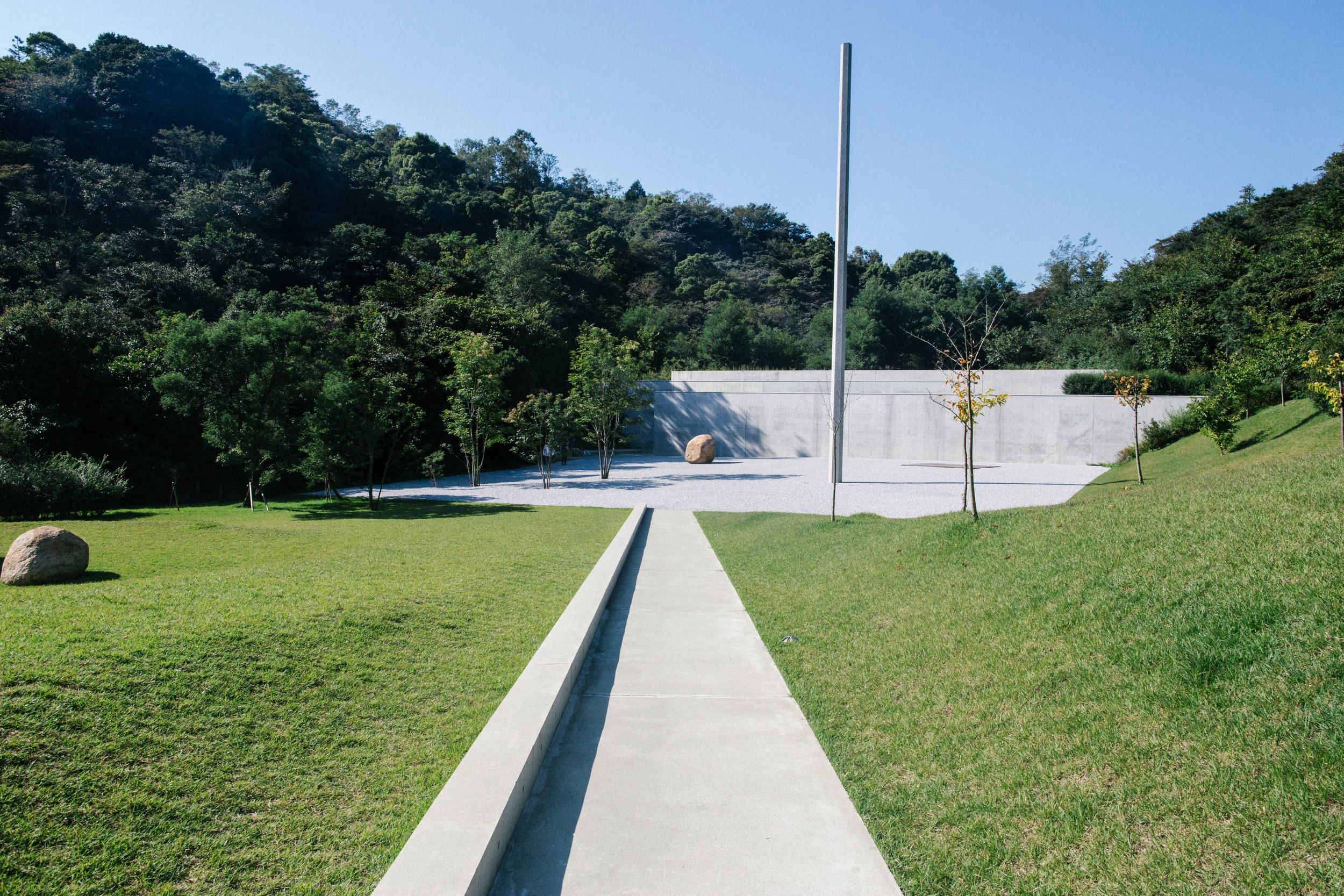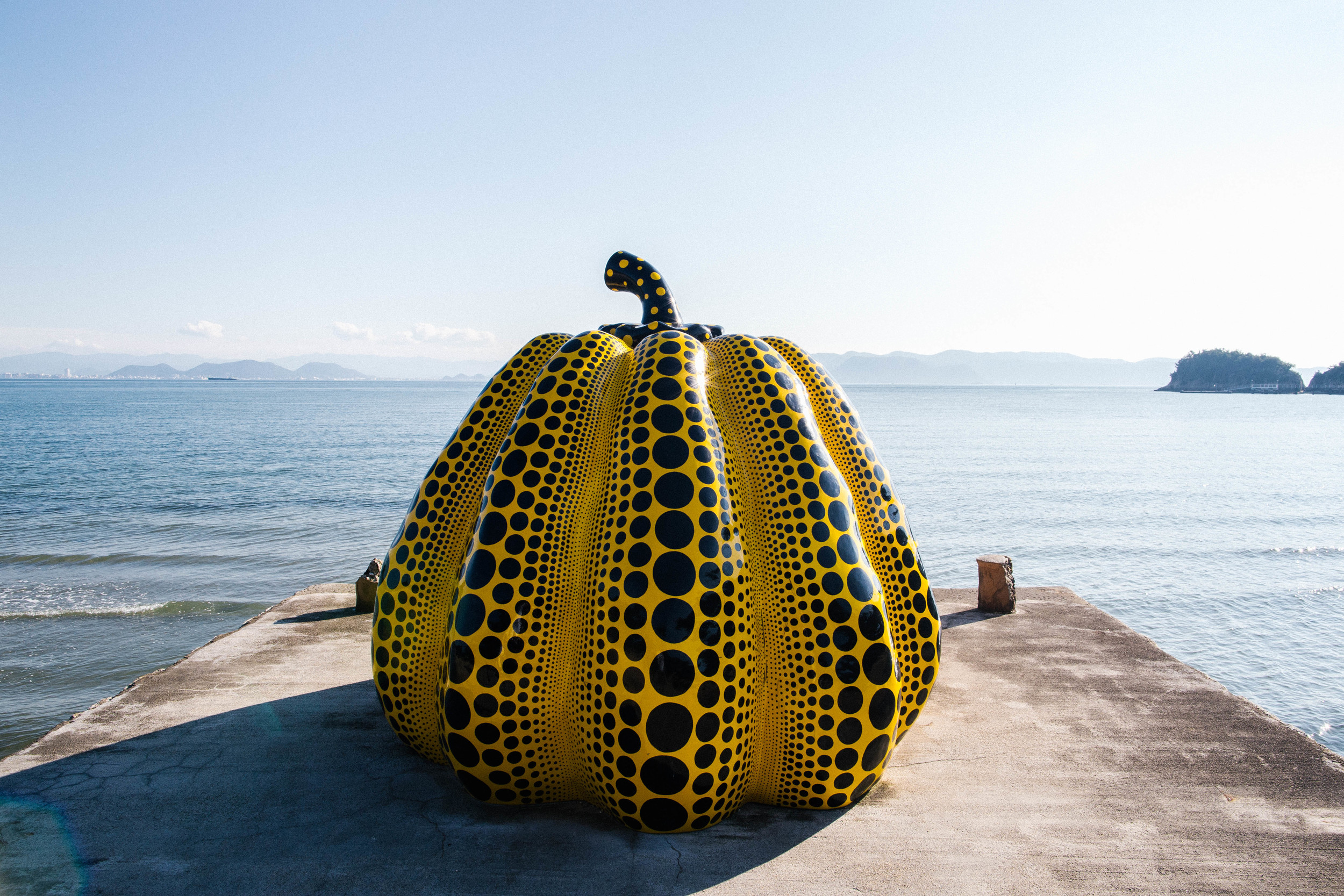Naoshima
/Naoshima is no secret to the contemporary art world and its bougie stans with Leicas hanging from their necks. The place is recognizable by that big polka dot pumpkin shot by those globetrotting #instagrammers. Naoshima is the most recognized island in the Seto Inland Sea / Setouchi Islands region. As one of the islands of the Setouchi International Art Festival, revitalised interest has flooded the island(s) in recent times. Naoshima and the surrounding fishing islands have been in decline due to the aging population and industries that went kaput with the times. With the help of Benesse Corporation, the islands are now scattered with museums, galleries and activities. The Benesse House Museum houses work by some of the most influential contemporary artists such as Keith Haring, Jean-Michel Basquiat, Cy Twombly, Jackson Pollock, Yayoi Kusama, Jasper Johns, Nam June Paik, Andy Warhol, Richard Prince and many other OGs. Yup, on a tiny subtropical island in middle of the sea far away from the minimalist concrete galleries of Blade Runner Tokyo.
Most arrive at Naoshima on ferry through Miyanoura Port from Uno Port (¥290/US$2.40 one way, 20 minutes) in Okayama Prefecture. To reach Uno Port, you will travel on the JR Uno Line from JR Okayama Station (50 minutes) where you will most likely arrive on the Shinkansen. Majority of the trains from JR Okayama Station to Uno Station require a transfer at Chayamachi Station (there are several express trains that don't require a transfer). You'll know you're going the right way when you come across granola-backpackers on the JR Uno Line. In summary, JR Okayama Station > JR Chayamachi Station (remain onboard if express to Uno Station) > Uno Station > Uno Port > Miyanoura Port. The smart ones will run to the closest bicycle rental shop (¥500 per day) to better navigate the island. Naoshima is a great place to spend a relaxing day with a night's stay but can be experienced as a day trip with moderate rotation.
Grab a map of the island from the Naoshima visitor center to get an overview.



The main points of interest are of course dotted by the Benesse House boys. If you're trekking on bicycles with your squad, you'll travel along the coastal road going south/southeast. Relax, there's only one obvious road with some brolic hills; you can't get lost. Your first destination will be Chichu Art Museum designed by Tadao Ando. Chichu Art Museum beautifully stands with the environment reaffirming the relationship effort of nature and people. Claude Monet, James Turrell, and Walter De Maria are on permanent display at the museum. The architecture by Tadao Ando is in line with his other masterpieces and utilize light to design the space in which changes the experience of your visit.




After running through Chichu Art Museum, you will come across Lee Ufan Museum followed by Benesse House Museum. Lee Ufan is one of the figures of the Mono-ha movement in the 1960's. Minimalism and rhythmic organic movements can be experienced at the Lee Ufan Museum. A short ride away is the center of Naoshima, Benesse House Museum. Benesse House Museum is the center of where the islands' art initiative started. With the concept of "coexistence of nature, art and architecture", the museum/hotel coexists with the island's natural offerings. If you're ballin' like that, this is where you want to spend the night. The Benesse House Museum is designed by Tadao Ando as well along with Chichu Art Museum and Lee Ufan Museum. The Benesse House Museum is where you can view artworks of Keith Haring, Cy Twombly, Jasper Johns, Nam June Paik, Frank Stella, Jean Michel Basquiat, Andy Warhol, Richard Prince, Yayoi Kusama and countless other notable artists and visionaries. A very H.A.M. lineup indeed. In addition to the indoor exhibitions, artists have created site specific works along the seashore and forest next to the museum. The most notable outdoor installation being Yayoi Kusama's yellow polka-dot pumpkin. Naoshima's contemporary art experience can't be duplicated or matched by any other effort. Quote us on that.
You can stroll on to the rest of the island by going further east to Honmura. Honmura is more quiet compared to the busier port of Miyanoura. Architect god-body Tadao Ando has a museum in Honmura, Ando Museum. The space is created within an existing 100-year-old traditional wooden house with viewings of Ando's work and Naoshima's history. Also scattered around Honmura is the Art House Project. Artists utilize existing houses in this sleepy fishing village and create them into works of art. The transformation of these historic structures are interwoven with respect for the past and community. The project houses are easily missed if you're not looking for them. These community projects are scattered across the other Seto Insland Islands as well. This unique experience of progressing the arts through deep efforts of finding the solution to the coexistence of new and old is as Japanese as it gets.
There are plenty of guesthouses for those that don't have the finances on deck to stay at Benesse House. Yado Seven Beach is a friendly guesthouse with the chillest vibes. The location is a very short walk from Miyanoura Port. More importantly, the only 7-Eleven and convenience store aka bodega on the island is also a very short walk away. More accommodations can be found on this list.











